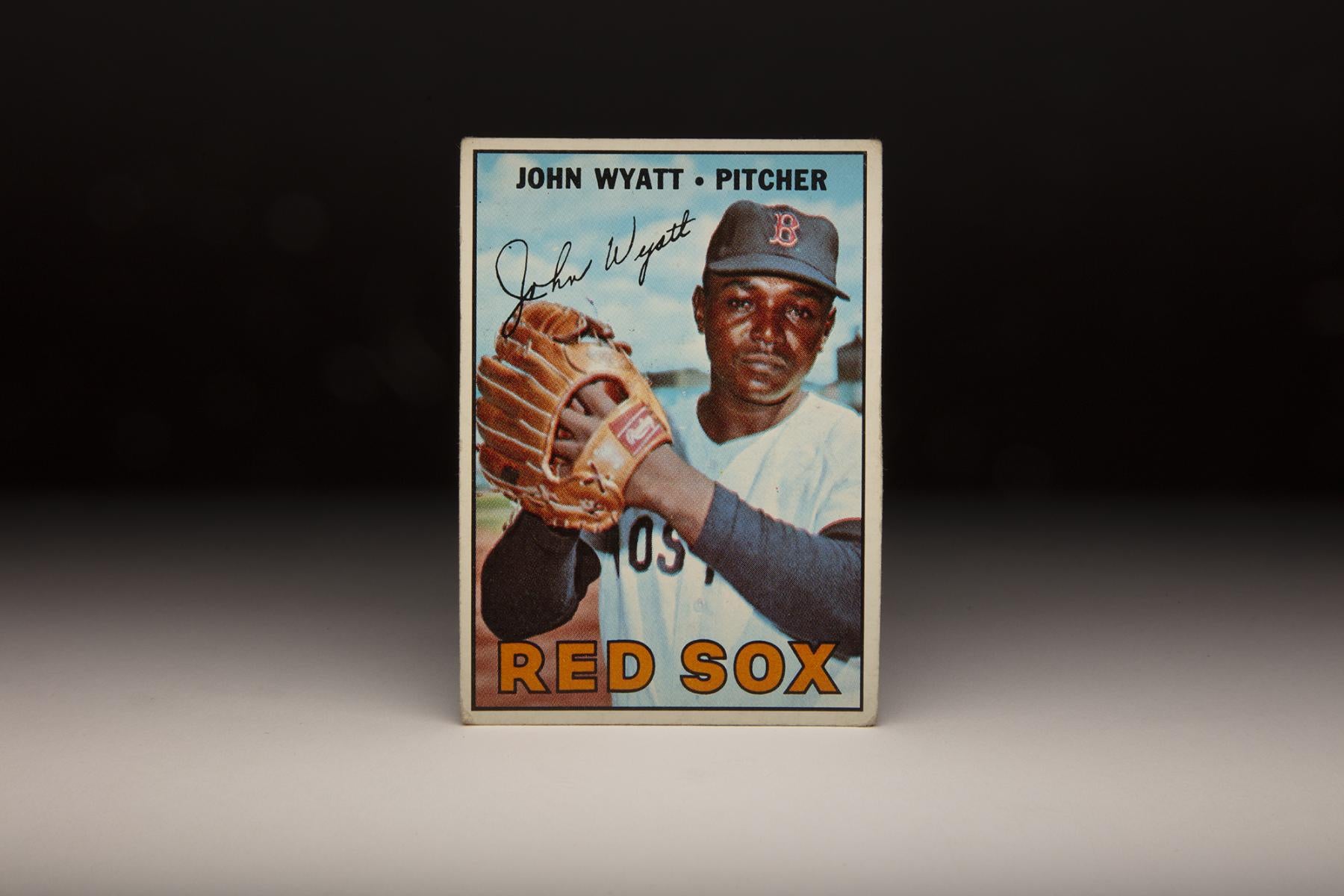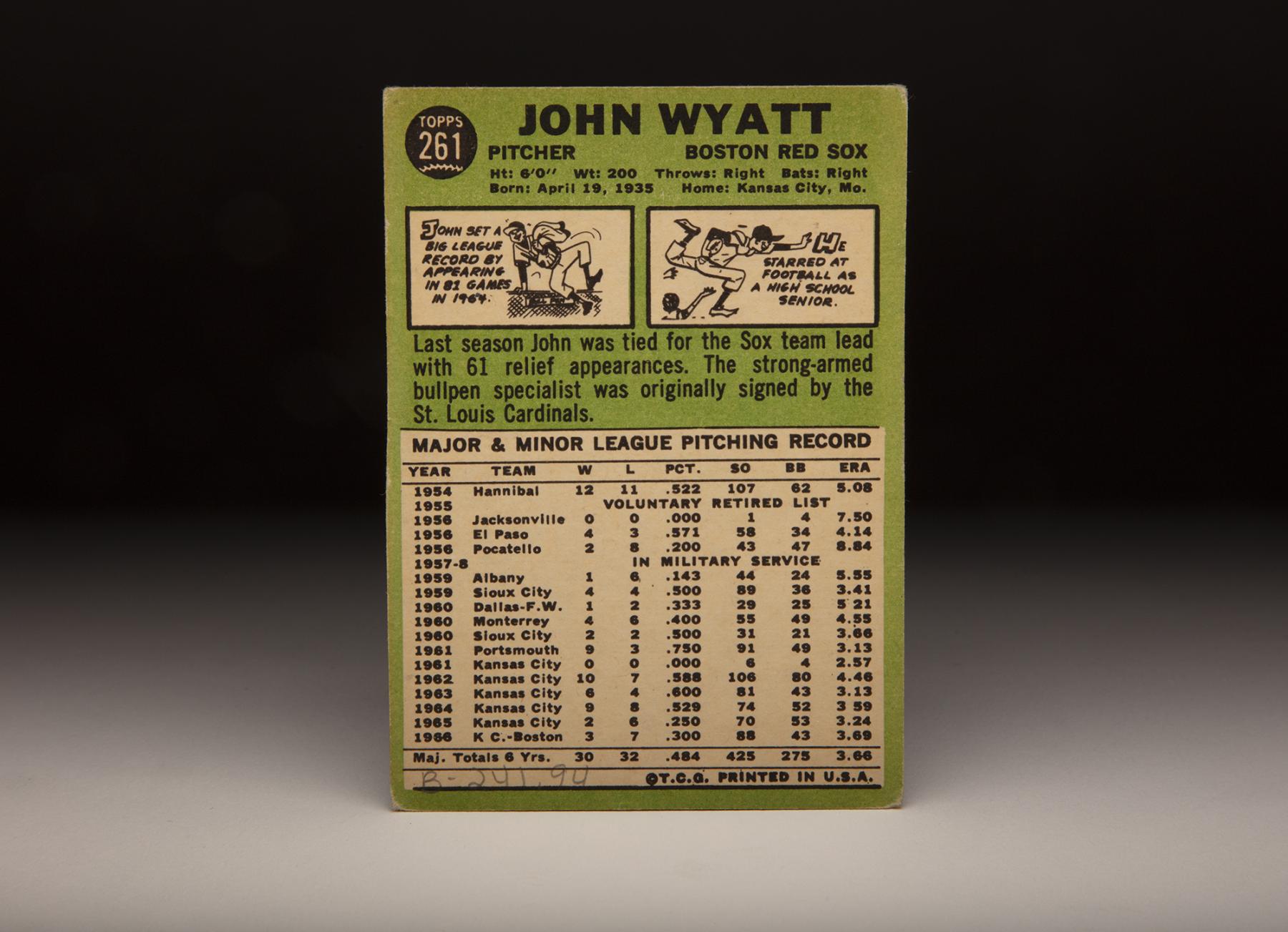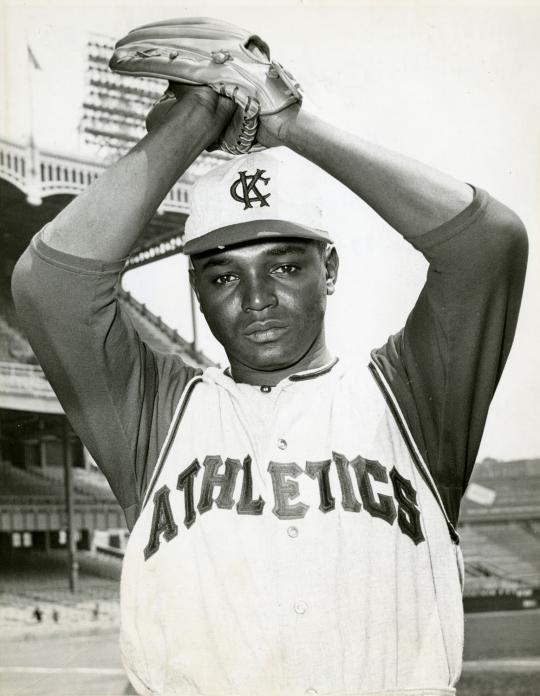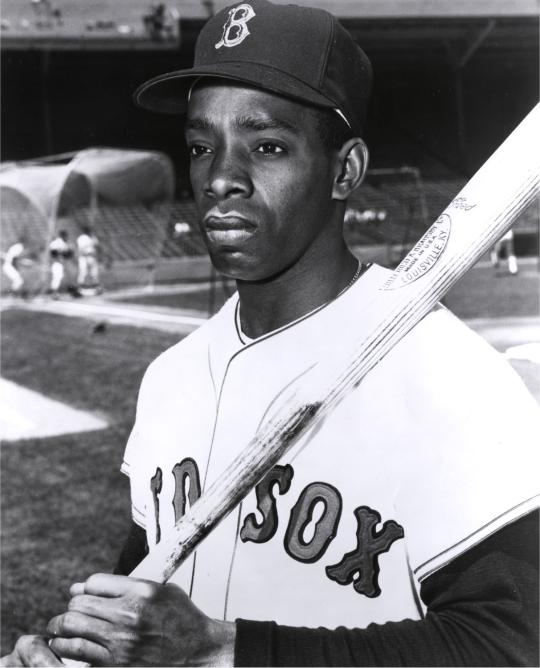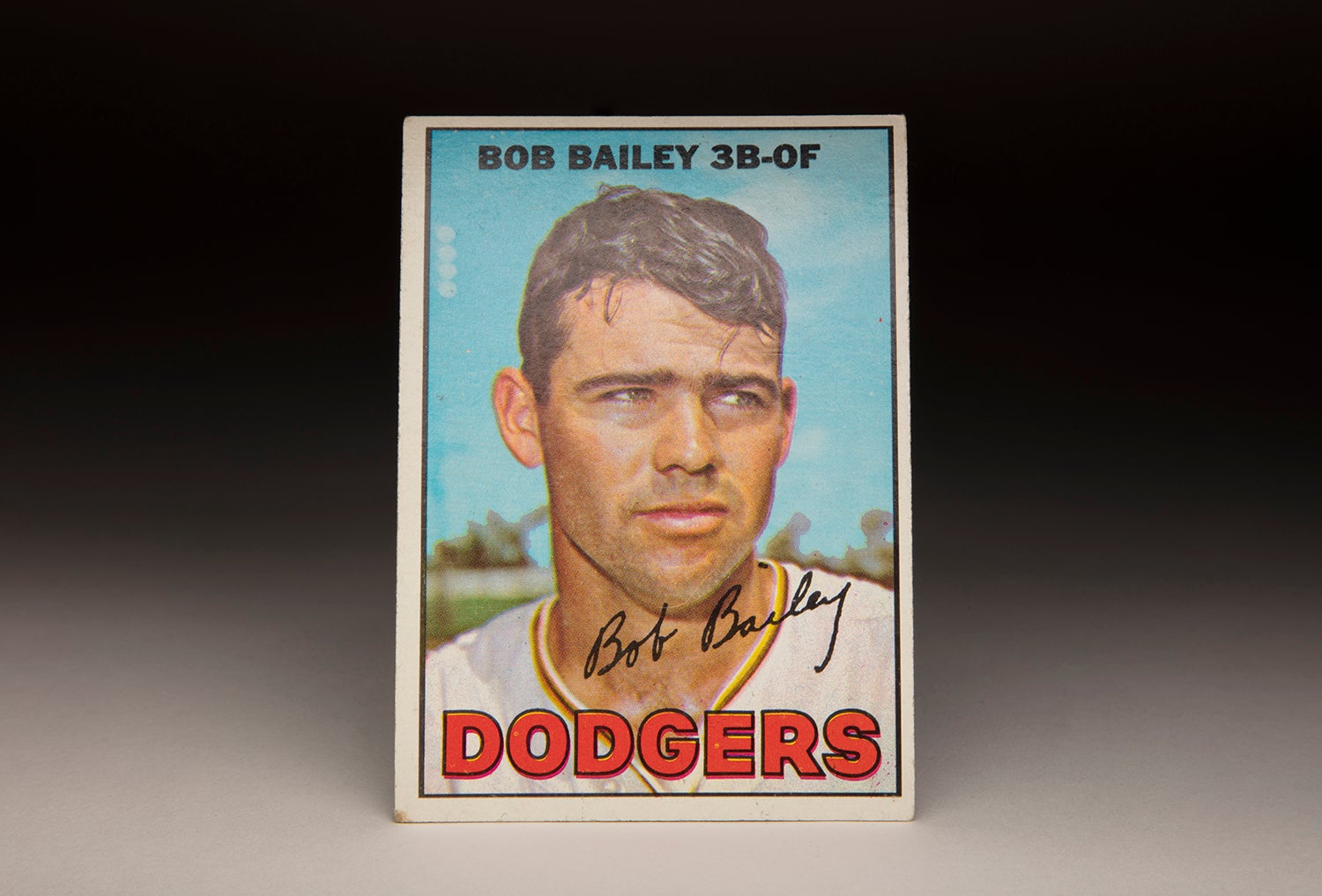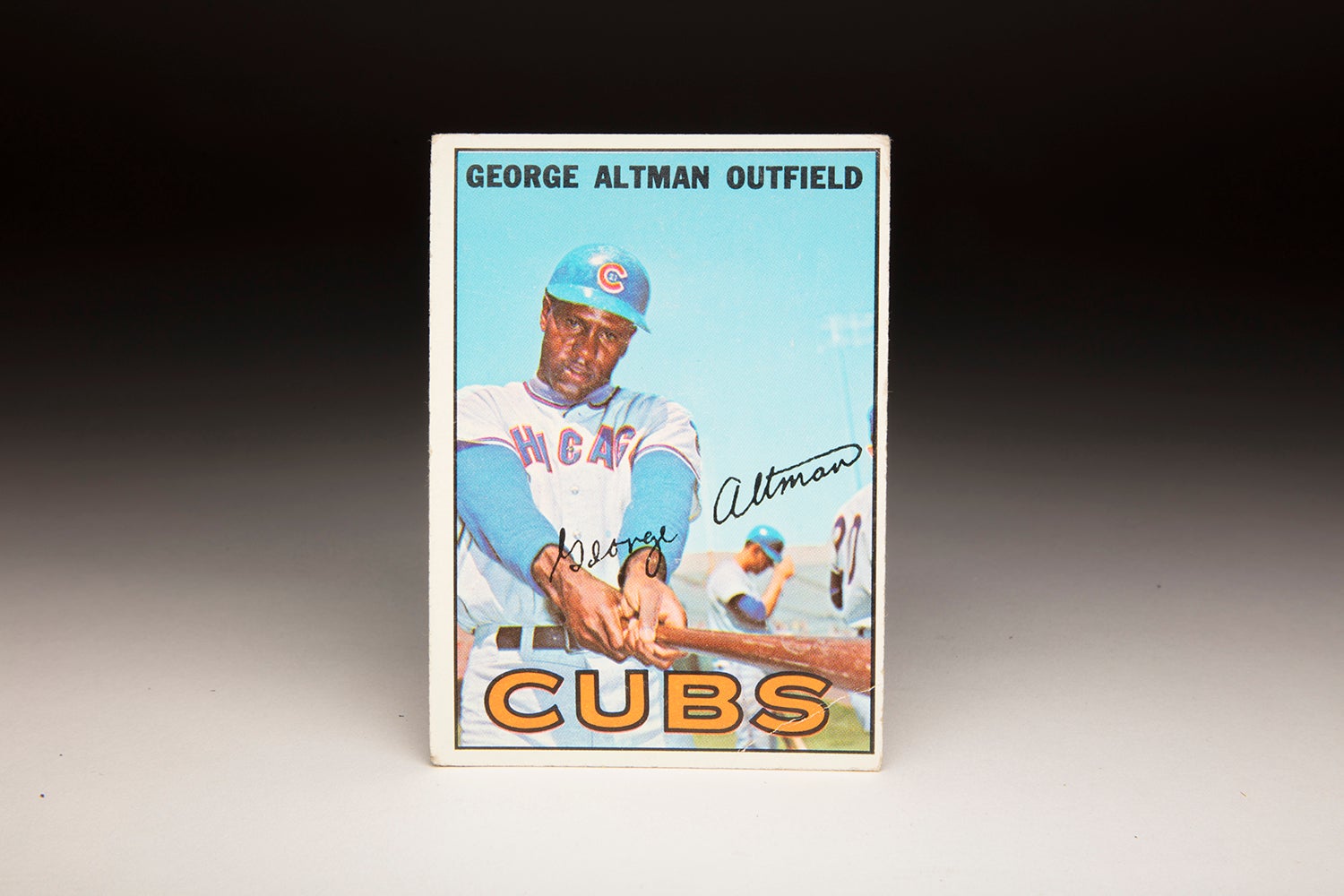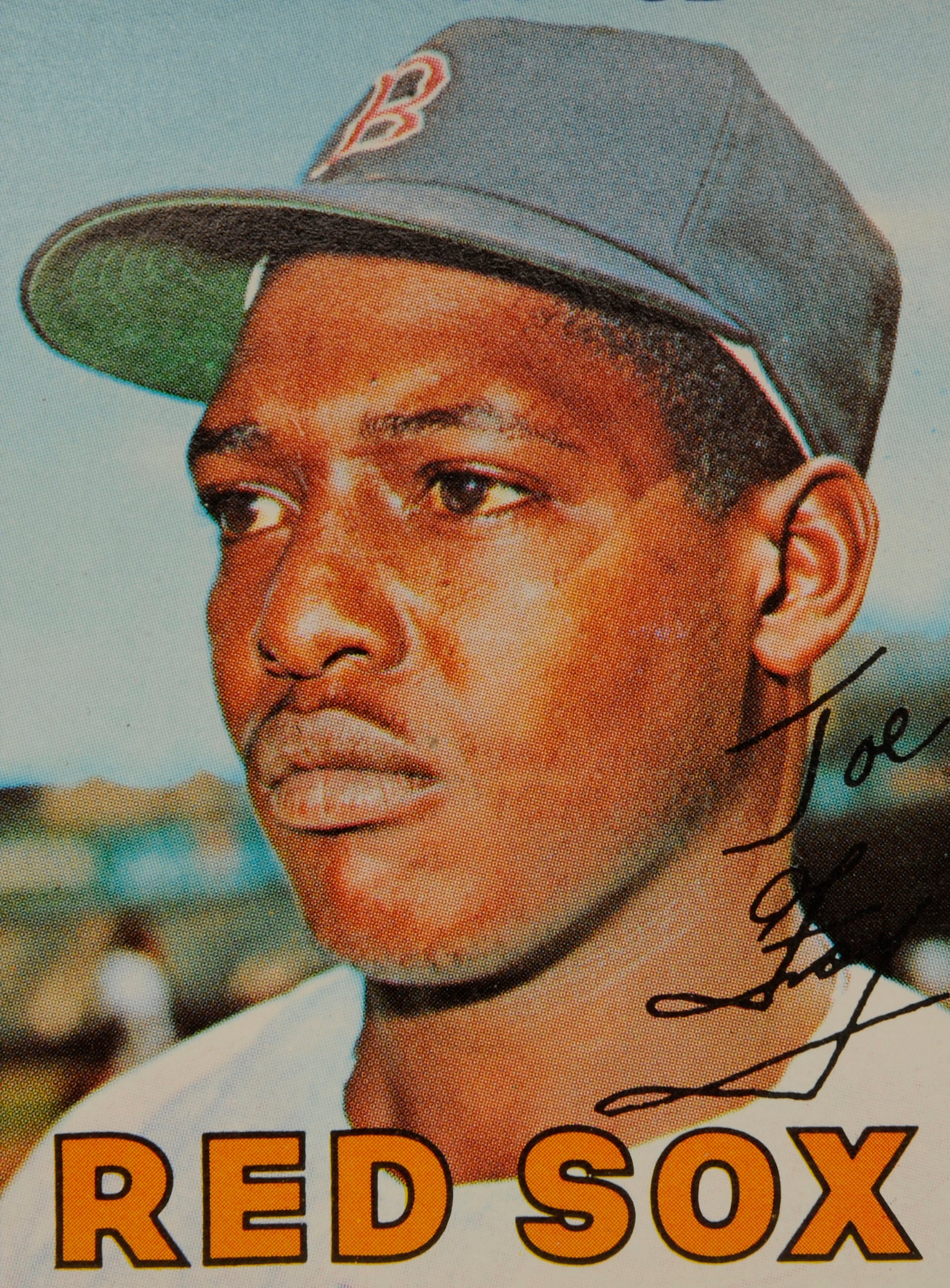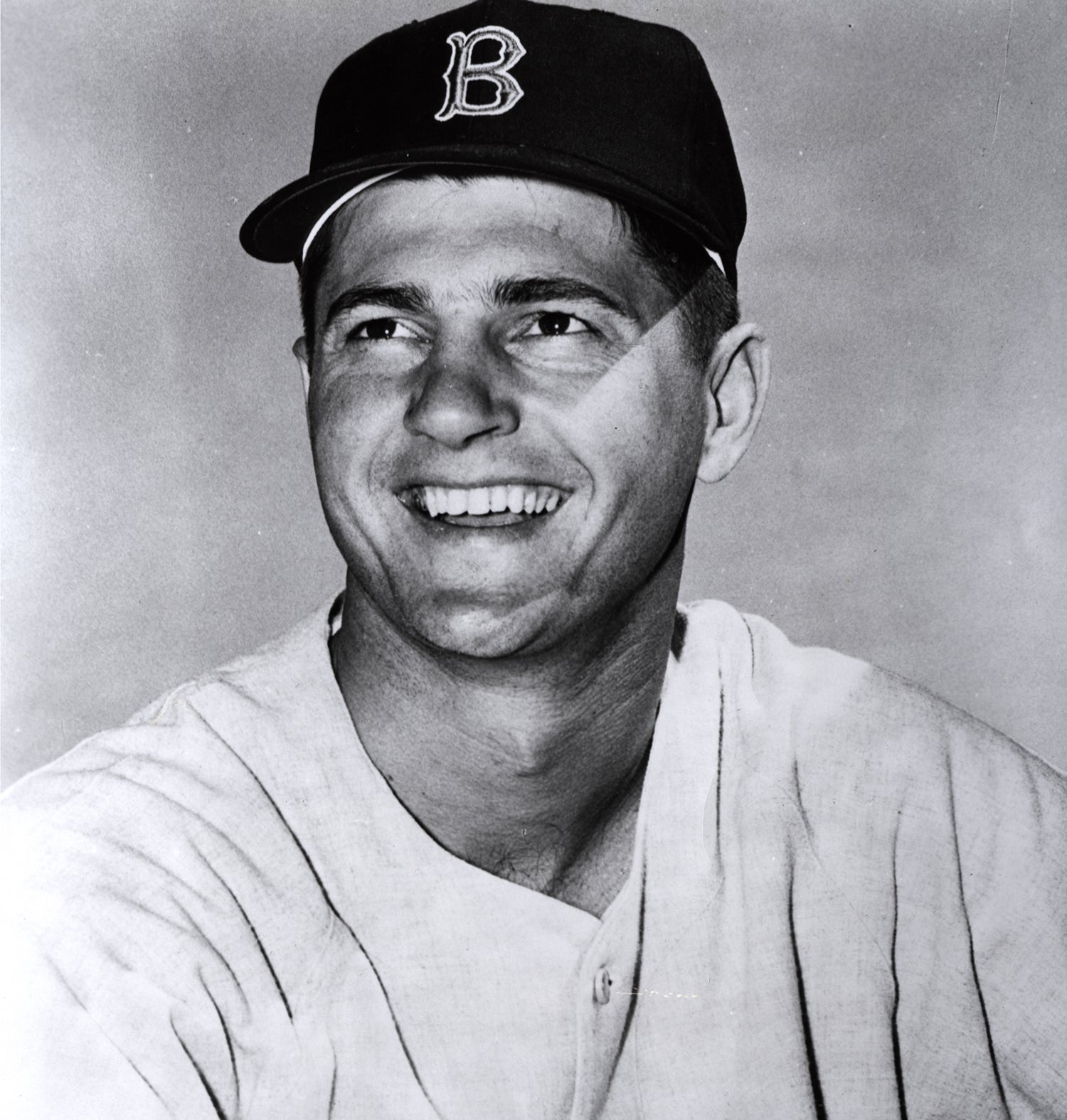- Home
- Our Stories
- #CardCorner: 1967 Topps John Wyatt
#CardCorner: 1967 Topps John Wyatt
The history books will always say the 1967 Red Sox season belonged to Carl Yastrzemski at the plate and Jim Lonborg on the mound.
But out in the bullpen, 32-year-old John Wyatt authored a piece of his own Impossible Dream.
Hall of Fame Membership
There is no simpler, and more essential, way to demonstrate your support than to sign on as a Museum Member.
A former Negro Leagues standout, Wyatt pitched for nine seasons in the big leagues despite not making it to the majors until he was 26. But with a repertoire of several pitches – some that allegedly included slippery substances – Wyatt made his mark on the 1960s as one of the game’s most durable relievers.
Born April 19, 1935, in Chicago, Wyatt was raised in Buffalo. Following high school, Wyatt signed with the Indianapolis Clowns of the Negro American League. The St. Louis Cardinals signed Wyatt prior to the 1954 season, and the 19-year-old Wyatt went 12-11 with a 5.08 ERA with the Class D Hannibal Cardinals that season.
Released by the Cardinals after one season, Wyatt returned to the Clowns before his contract was sold to the Milwaukee Braves in 1956. He pitched just two games for Class A Jacksonville before the Braves cut him loose, but Wyatt eventually landed with the Kansas City Athletics and appeared in 11 games for the Pocatello Bannocks of the Class C Pioneer League at the end of the 1956 season.
Following two years in the Army, Wyatt bounced through the A’s system and even into the Mexican League before finding his stride with the Athletics’ Class A affiliate in the South Atlantic League in 1961. In 52 games with the Portsmouth-Norfolk Tides, Wyatt went 9-3 with a 3.13 ERA – earning a promotion to the big leagues that fall.
In Spring Training of 1962, Wyatt impressed A’s manager Hank Bauer with his fastball and his demeanor – not to mention his 4-1 record in spring games. After limiting the defending world champion Yankees to five singles over eight innings in an exhibition game on April 6, Wyatt made Kansas City’s Opening Day roster.
Wyatt was 1-1 with a 6.38 ERA in his first four starts of the season before Bauer moved him to the bullpen. There, Wyatt found his footing before returning to the rotation for five starts in late May and early June, then went back to the bullpen for good. In his final 23 games of the season, Wyatt went 4-1 with nine saves and a 2.56 ERA. For the season, Wyatt was 10-7 with 106 strikeouts in 125 innings.
He would never start another big league game.
By the middle of the 1963 season, many American League hitters rated Wyatt and Boston reliever Dick Radatz as the two fastest pitchers in the league.
The 5-foot-11, 200-pound Wyatt would often attack hitters with a sidearm fastball – which explains the right-hander’s limiting righty batters to a .216 batting average over the course of his career.
Wyatt was 6-4 with a 3.13 ERA and 21 saves in 63 games in 1963, then set a new MLB games pitched record with 81 appearances in 1964 en route to a 9-8 record, 20 saves and a 3.59 ERA. Wyatt was also named to the All-Star Game that year.
“Man, I never dreamed I’d be on the (All-Star team),” Wyatt told the Associated Press. “I’ve been happy just pitching in the big leagues.”
Wyatt was 2-6 with 18 saves and a 3.25 ERA in 1965, completing a stretch of four seasons where he won or saved 97 of the Athletics’ 261 victories (37 percent). But Wyatt struggled to start the 1966 season, and the A’s traded him to the Red Sox on June 13, 1966, along with Rollie Sheldon and José Tartabull in exchange for Jim Gosger, Guido Grilli and Ken Sanders.
Sheldon and Tartabull got the most attention from the Boston media. But it was Wyatt who would leave the biggest mark on Red Sox history.
After going 3-4 with nine saves and a 3.14 ERA over 42 games with Boston in 1966, Wyatt got his chance to close games for rookie manager Dick Williams in 1967. Wyatt did not allow an earned run until his 10th appearance of the season, and by the end of May he was entrenched as the Red Sox’s bullpen ace.
Wyatt was “throwing like a kid again,” Williams said – though allegations about ball doctoring that had dogged Wyatt for years again surfaced in Boston.
“I don’t see how anyone can control a Vaseline pitch,” Wyatt told The New York Times News Service. “I tried it once in the bullpen just to see how it worked. The ball shot over the bullpen fence.”
The Red Sox were 42-40 two games following the All-Star break when the team caught fire, winning 10 in a row. Wyatt, who was 1-1 with four saves in the month of June, saved five more games in July and began the month of August with a record of 5-4, 14 saves and a 2.45 ERA.
In Wyatt’s 33 games through July 31, Boston was 21-12.
With the American League pennant in sight, Williams pushed Wyatt hard in August – using him in 17 games. Wyatt thrived on the extra work, going 3-2 with four saves and a 2.19 ERA.
“Right now, I’m pitching better than I ever have,” Wyatt told the Kansas City Star in early September. “My arm has to have some rest, but not much.”
But after six scoreless outings from Aug. 27 through Sept. 8, Wyatt began to tire. On Sept. 23, Wyatt allowed a two-run homer to Brooks Robinson of the Orioles in the eighth inning that turned a 5-5 tie into a 7-5 Boston loss. After that, Wyatt did not pitch in the Red Sox’s final five games of the regular season as Boston chased the pennant.
With victories over the Twins in the final two games of the season, the Red Sox completed their Impossible Dream by going from ninth place in 1966 to the top of the AL standings.
By the World Series, however, Wyatt was ready to go. He pitched two scoreless innings of relief in Game 1, keeping the Red Sox within one run at 2-1 in a game where Bob Gibson went the distance for the Cardinals.
Lonborg and Gibson traded wins over the next four games as the Cardinals took a 3-games-to-2 lead into Game 6. With few starting pitching options left due to injuries, Williams turned to rookie Gary Waslewski – who allowed just two runs over 5.1 innings. Wyatt then extinguished a two-on-and-one-out Cardinals rally, preserving Boston’s 4-2 lead heading into the seventh.
A Lou Brock two-run home run in the seventh off Wyatt tied the game, but Boston rallied for four runs in the eighth to make a winner out of Wyatt and send the series to a seventh game. There, Gibson pitched his third complete game of the series, defeating Lonborg – who was working on only two days’ rest.
Wyatt was effective again in 1968, but the Red Sox could not recapture the magic of the previous season. The Yankees purchased Wyatt’s contract on May 17, 1968, then traded Wyatt to the Tigers on June 15 in exchange for Jim Rooker.
With Detroit, Wyatt was 1-0 with two saves and a 2.37 ERA in 22 games – helping the Tigers win the AL pennant.
Wyatt was cut by Detroit late in Spring Training of 1969 before hooking on with the A’s, who had moved to Oakland the previous season. He appeared in only four games before being released on May 27, a move that ended his career.
Over his nine big league seasons, Wyatt was 42-44 with a 3.47 ERA and 103 saves. Though the save did not become an official statistic until 1969, Wyatt’s total ranked 13th all-time when he retired.
He passed away on April 6, 1998.
“Until I came (to Boston), I didn’t know what a first-class operation was,” Wyatt told the Kansas City Star. “(There’s) nothing like being with a winning club.”
Craig Muder is the director of communications for the National Baseball Hall of Fame and Museum

